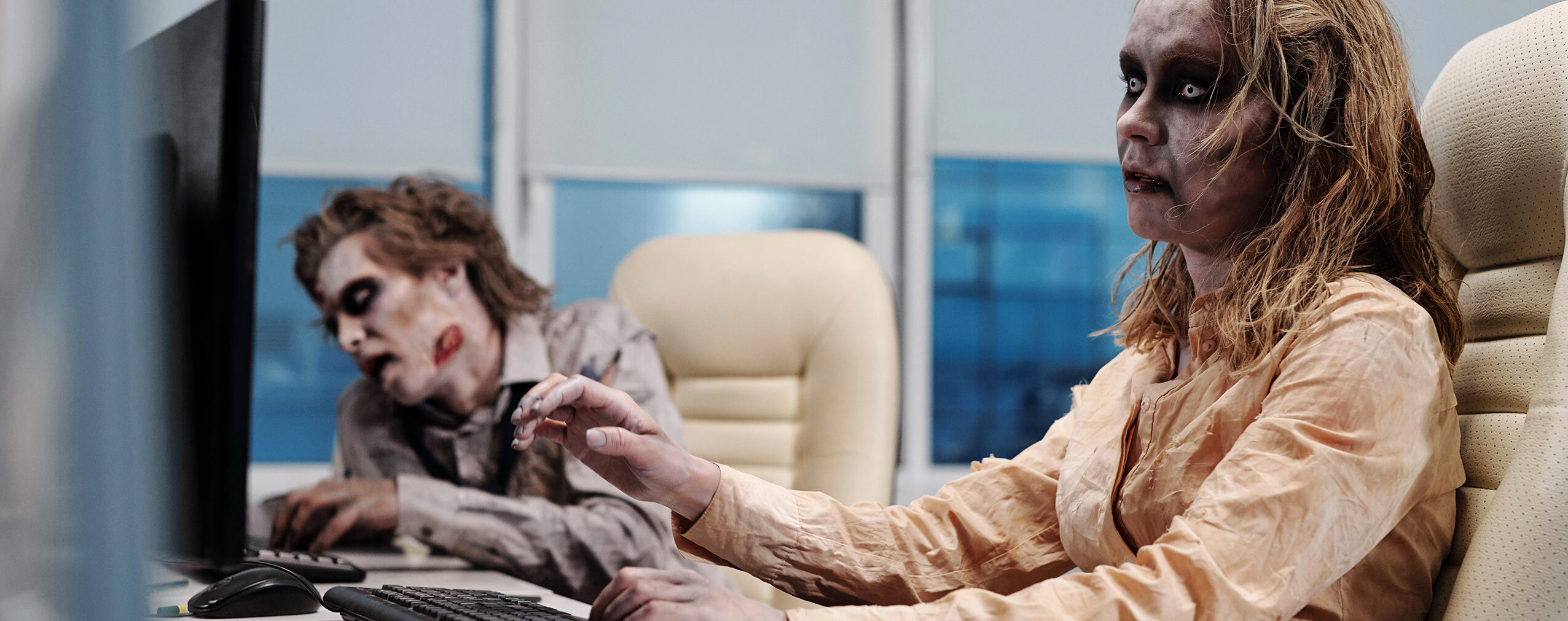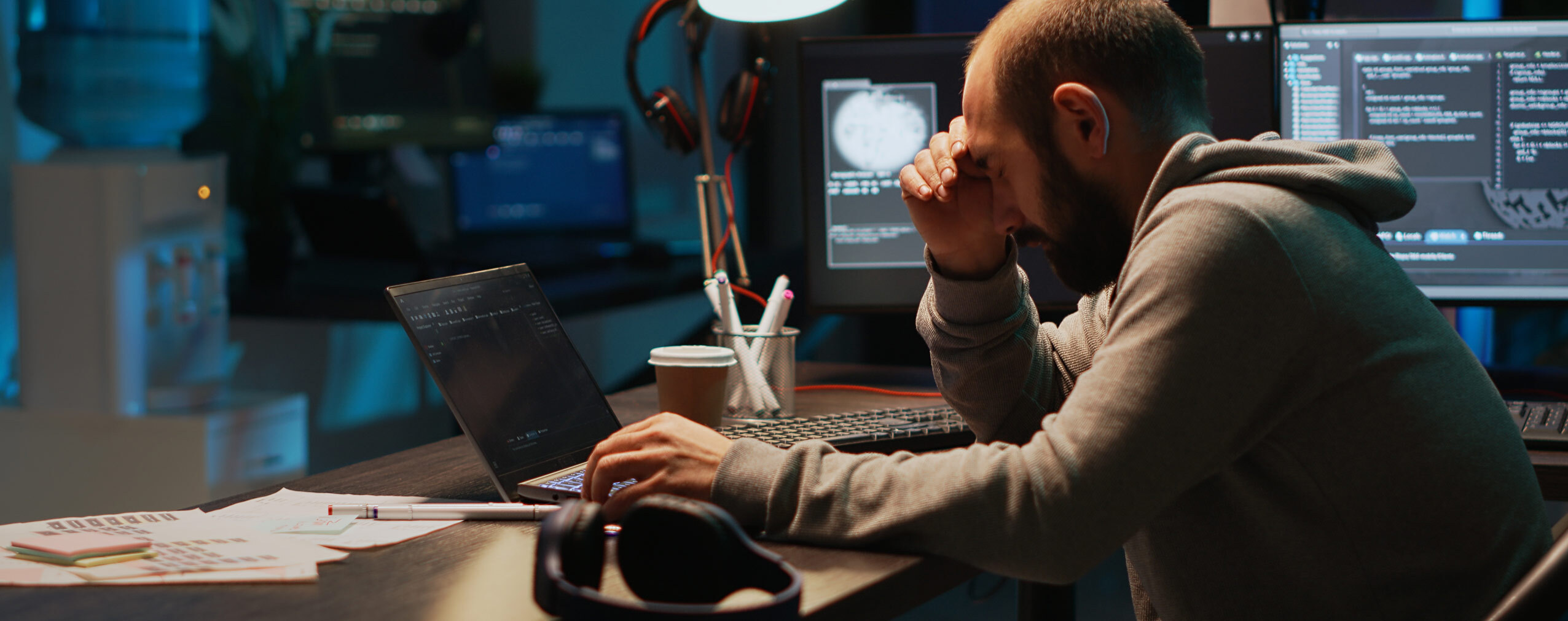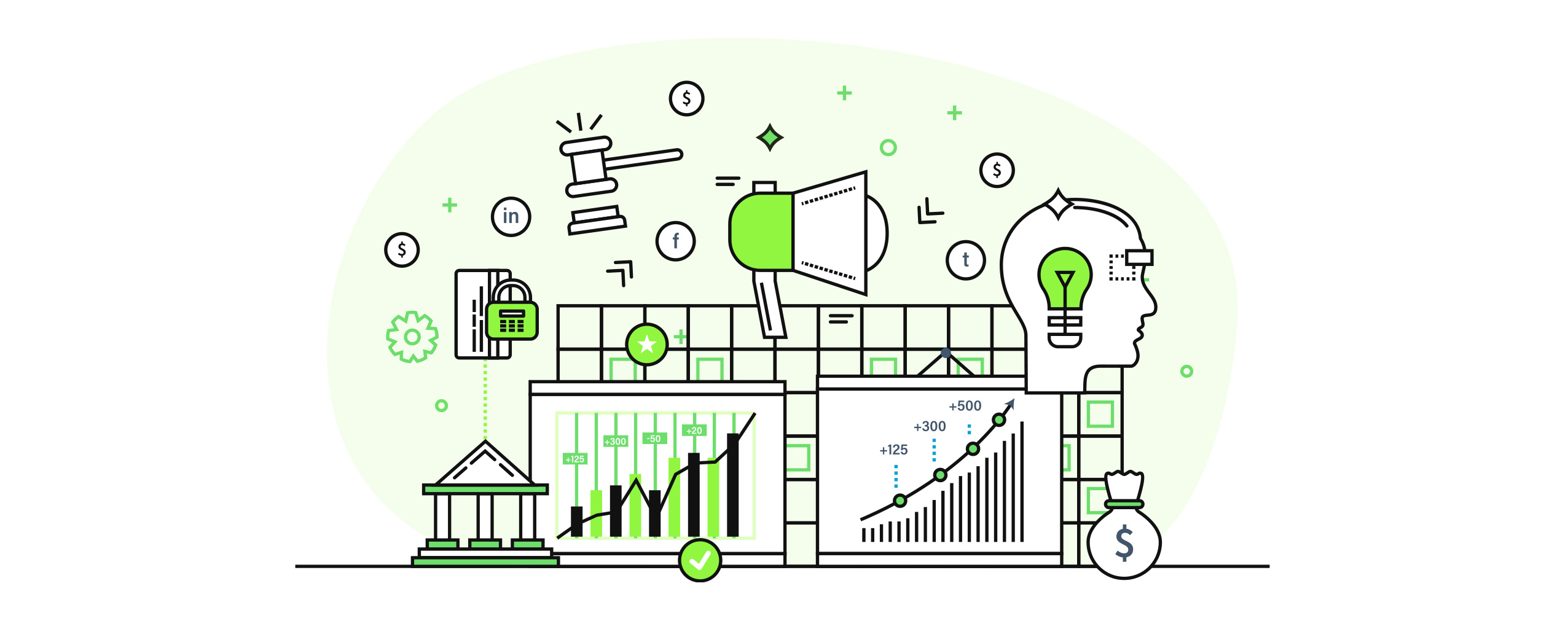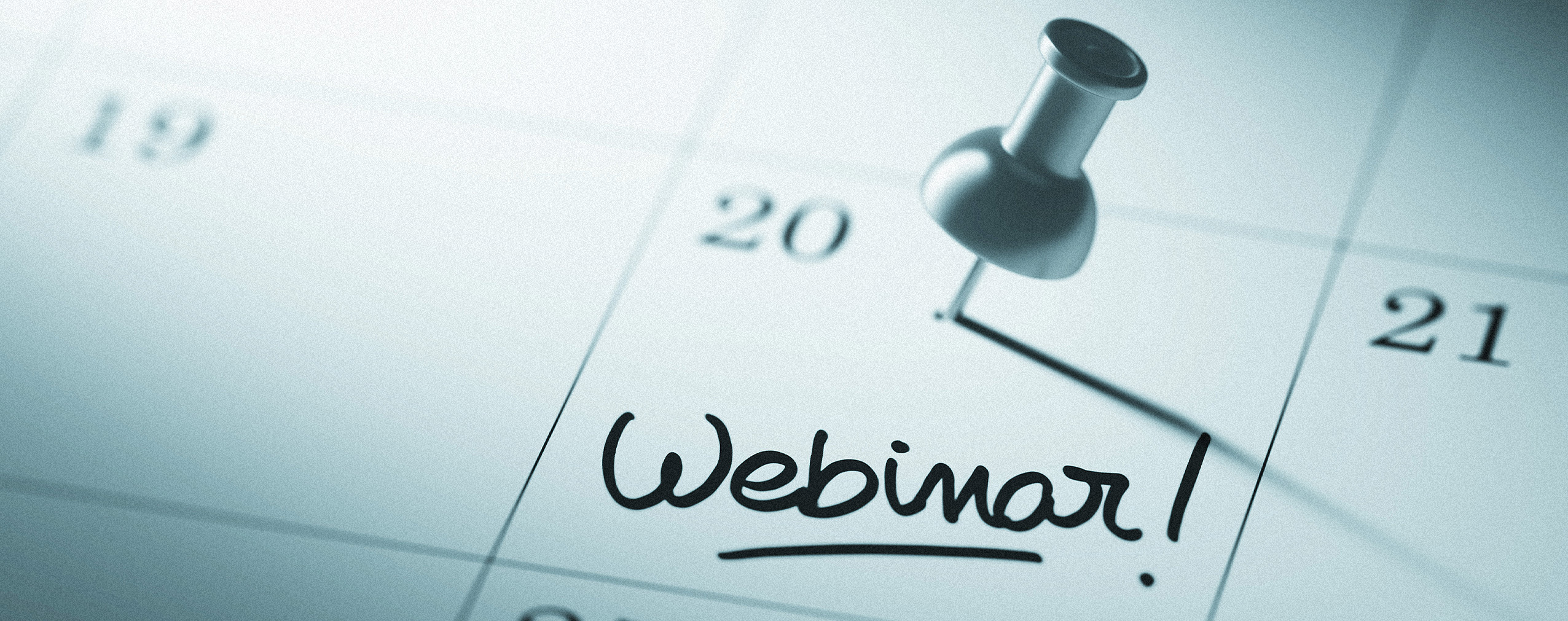Hosting your own webinars can be very simple. Contrary to appearances, it does not have to involve high costs and professional equipment. All you need to do is learn a few tips that will help you set up a basic webinar studio in your home or office.
And there’s another perk: you won’t look and sound like a zombie. Something that all attendees of online events worry about.
Nowadays, various types of webinars and online training are no longer just a tool for educators. In fact, they are effective tools used for promotion and building a professional image of businesses and independent experts. A high-quality webinar can not only attract new audiences to your company but also strengthen relationships with loyal customers.
Do you want to start your adventure with running webinars but don’t know what to pay attention to? You’ve come to the right place. Today we will tell you how to properly prepare for this task.
Table of Contents
What should an attractive webinar look like?
An attractive webinar should be properly prepared both in terms of content and visuals. The content layer is a rather individual issue and depends on such factors as the subject, the target group, or the level of knowledge of your attendees, so we will limit ourselves to just a few suggestions in our tips on this topic. First of all, compile brief and engaging content, think through the script and be sure to conduct at least one rehearsal without the audience to test the quality of the webinar. It will also be very helpful to create a plan for engaging your attendees.
Here, we would like to focus on technical issues. Which ones are crucial? First of all, it is necessary to ensure the quality of video and sound. Equally important are the frame composition and additional elements, such as an engaging presentation, videos, graphics, or charts.
How to prepare for a webinar?
When preparing to host your own webinar, in addition to the content you want to share with your audience, you also need to pay attention to some technical issues. Rest assured: thanks to modern platforms for webinars and online meetings, such as ClickMeeting, starting your adventure with this format will be really easy. Here are some useful tips that you’re sure to find helpful.
Professional equipment is not essential
Contrary to what you may think, creating a good webinar does not require having the best quality camera. As the name suggests, webinars are nothing more than virtual meetings between the presenter and attendees, replacing stationary seminars. Of course, they also offer far greater possibilities: you can create automated webinars or on-demand webinars, among other things. So even with only a webcam built into your laptop, you can present yourself in a professional manner.
The resolution at which your camera captures and transmits the image is not the parameter that determines the quality of the video on the webinar since the webinar software will reduce it anyway. What matters during a webinar is not so much the equipment but rather knowing how to set it up. Focus primarily on light and background.
Light – your greatest ally
People are visual creatures and love eye-catching pictures. Take advantage of this when preparing for a webinar! Your greatest ally is light. Unfortunately, it is also easy to make a mistake that can significantly affect the event’s reception. That’s why you must, first of all, take care of optimal lighting. Contrary to what you may think, this doesn’t have to involve renting a professional studio or investing in equipment.
Here are some practical tips.
- If you don’t have a professional lamp, just sit in front of a window or other light source. You can also use, for example, a bedside lamp, a desk light or even a white card displayed on a monitor. Also, pay attention to ring lights: you’ll find them even in an ordinary supermarket, they cost you a little, and they help you achieve great results, including selecting light color and intensity.
- Above all, take care to illuminate your face: this is what plays a key role during the webinar.
- Avoid lighting that is visible in the frame, as it will negatively affect the quality of the image. Too much light from the background will make the webcam adjust to it, and as a result, your face will be unnaturally dark.
- If you use several light sources in the room, make sure they are of similar color.
Take care of the perfect frame
During webinars, there is one simple rule for setting the frame: it should primarily show your face. At the same time, the speaker’s image should not take up more than three-quarters of the frame.
How you look and what can be seen in your background are, right next to lighting, the most important issues that shape an attractive image. For this reason, we strongly recommend that you find a well-lit location and check what is in the frame. You’ll do this easily with a preview and AV tester even before the event begins.
After all, you don’t want your professional image to be impacted by things like laundry drying in the background. Try to make sure there are as few distractors around as possible. A simple single-color wall will do if you don’t have a perfectly minimalist background.
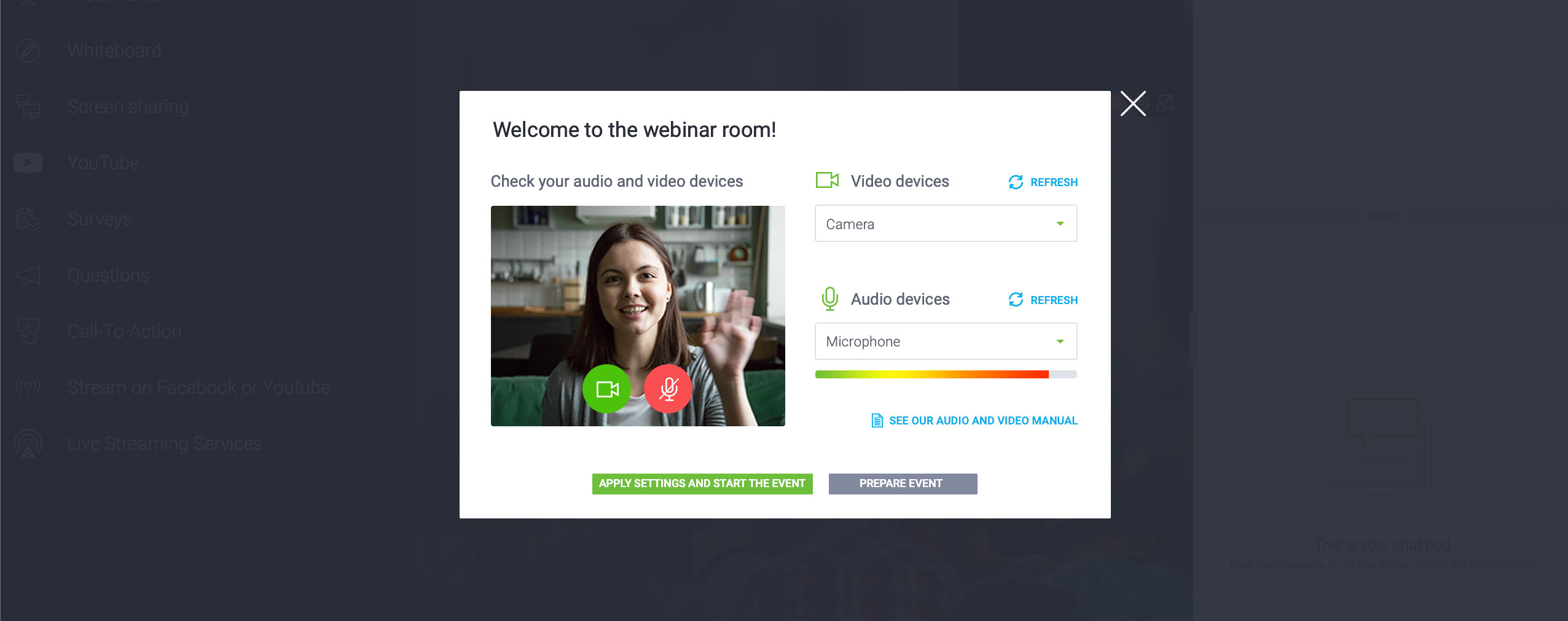
Good sound quality
High-quality audio is the backbone of delivering information online. This doesn’t involve state-of-the-art microphones either, at least at the beginning of your webinar journey. Of course, having them won’t hurt in any way, but there are a few less exciting issues you need to keep in mind. We are talking, for example, about the noise caused by household members or the sounds coming from outside the window. Therefore, if you want to avoid awkward situations, record with the windows tightly closed when you are alone in the room.
It can be helpful to place a note on the door informing your roommates or co-workers that you are about to participate in a webinar.
It’s also a good idea to turn off the air conditioner and other devices that emit sound.
Prepare, for example, headphones with a built-in microphone – they will provide much better quality than the microphone built into your laptop and won’t “collect” too much background noise.
If another presenter is speaking or you are taking part in a video conference, remember to mute the microphone. This will help you avoid chaos easily.
Get to know your software
Don’t be caught off guard, and familiarize yourself with the software you will use to conduct the webinar. Take the time to try out all the available features so that when you record, you can focus on delivering your content clearly and not get sidetracked.
Keep in mind how to change the view in the webinar room, run a presentation, conduct polls, or share a screen. Just to be sure, you can prepare a list of features you will use during the presentation and link it to a short action plan. This way, you will really feel comfortable and confident during your presentation.
Compelling content requires a plan
Not everyone is comfortable with going on the spur of the moment. That’s why we recommend creating a script for the entire meeting in preparation for a webinar. It’s best to include all the issues covered in the right order and any extras, such as graphics or charts. The more information, the better, as it helps avoid unnecessary pauses and confusion.
Involve other people
You can run a webinar on your own or with another presenter. You can also engage your audience, for example, using the Q&A function. Both options give you new opportunities, making the event more interactive. A helper is very useful at the beginning of your training and webinar adventure. Such a person can collect questions from the audience, moderate the chat and ensure that the meeting runs smoothly. So if you have the opportunity, reach out for help.
Test drive
Another point of proper preparation for a webinar is a so-called test drive. How to carry it out? Very simply, just treat it like a dress rehearsal before the performance. It is best to record and watch your efforts or ask someone to watch them, as then you will see your mistakes and be able to correct them. You will immediately determine if everything looks how you want it to or if something needs improvement. You will also feel more confident during the actual presentation because, first of all, you will have everything checked, and secondly, you will already have practice in conveying the given material.
Stay calm and review the checklist
Once you’ve taken care of the equipment and its use, created a neat script for the webinar, got your roommates out of the apartment, and picked the perfect time of day to host the dress rehearsal, it’s time for the most important thing. Now you need to take a deep breath, calm down and realize that you have taken care of everything. However, don’t think that this will keep you safe from all possible crises. Life is fickle, and you will often grapple with unexpected situations. And in dealing with them, only cold blood and distance will save you. Therefore, stay calm; even if something doesn’t go according to plan, don’t let yourself be carried away.
Hosting a webinar is a stressful task, even for old-timers. Therefore, to minimize the nerves and worries associated with it, you must prepare properly. Let’s summarize the know-how compiled in this article in the form of a short checklist:
- Plan what and how you want to communicate with your audience.
- Familiarize yourself with the software and hardware: learn the features and capabilities.
- Familiarize yourself with available educational materials;
- Take care of the right frame: pay special attention to good lighting and an attractive background.
- Inform other people that you are attending the webinar: a card placed on the door, for example, may be helpful.
- The most important thing, however, is to stay calm and realize that not everything is within your control. Approach potential problems with distance and learn from them. We wish you the best of luck!
